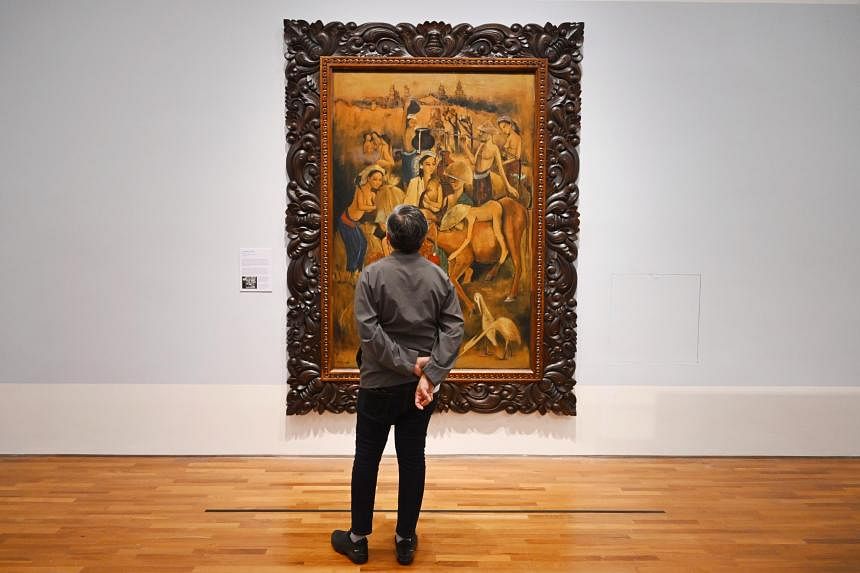SINGAPORE – Art lovers might be horrified by the idea of drilling a hole in an artwork.
But conservator Diana Tay did that to extract a tiny sample from Singapore pioneer artist Cheong Soo Pieng’s A Corner Of Art Studio (1947).
The founder of Barc (Beneath Art Research and Conservation) Labs is quick to clarify that the sample is the size of a full stop, carefully excised using a medical scalpel. The resulting cross-section revealed that Cheong had applied white ground on wood to prepare it for painting before layering on red-orange paint.
Handling an artwork is an intimidating experience, and Dr Tay says: “It’s always very scary. And usually when you are doing it, people are watching you. Every artwork is like a patient, everything has to be catered for differently.”
Putting art under close scientific study can yield new insights, as a new exhibition at the National Gallery Singapore proves. Cheong Soo Pieng: Layer By Layer, which opens on April 5, takes visitors into the painter’s works with interactive displays that “peel” back layers of paint, canvas and wood.
The Amoy-born Cheong (1917-1983) came to Singapore in 1945 and taught at the Nanyang Academy of Fine Arts. Along with fellow China-born artists Chen Chong Swee, Chen Wen Hsi and Liu Kang, Cheong went on a landmark trip to Bali in 1952, which resulted in an exhibition that helped solidify the identity and reputation of the pioneer generation of Singapore painters.
Exhibition curator Teo Hui Min says putting the show together was an eye-opening experience for her. She adds: “As a curator, I tend to look closely at the archives, the artworks and, of course, we work closely with the conservators. But it was a unique experience to rediscover an artist I had thought about for a long time.”
Dr Tay, who worked on Cheong and Nanyang painter Georgette Chen’s works for her doctorate in art history, criticism and conservation at the University of Melbourne, literally puts art under a microscope to study the materials used in art-making.
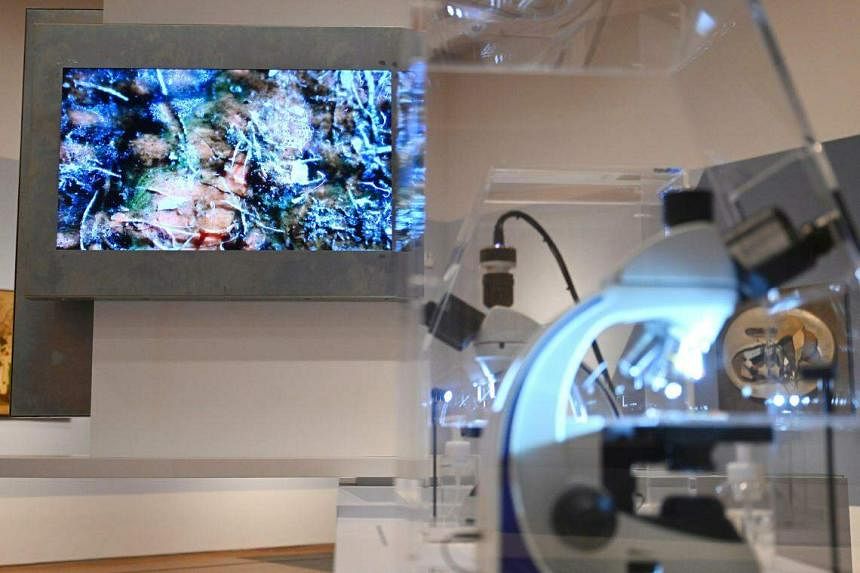
Visitors, too, can get up close and personal with these materials at the exhibition. There are interactive stations where microscopes have been set up, so one can peer at samples, and others where one can touch and feel linen and cotton canvases to better understand how textures can affect a painting’s appearance.
It is an intriguingly tactile way to look at art. This technology-oriented material analysis approach to examining art has become more commonplace in recent years, with some headline-grabbing examples of such cutting-edge techniques. Researchers have discovered “lost art” by painters, such as Vincent van Gogh and Edgar Degas, by using X-ray imaging to reveal works that have been painted over.
Dr Tay and Ms Teo’s collaborative efforts produced one such example in Cheong’s works.
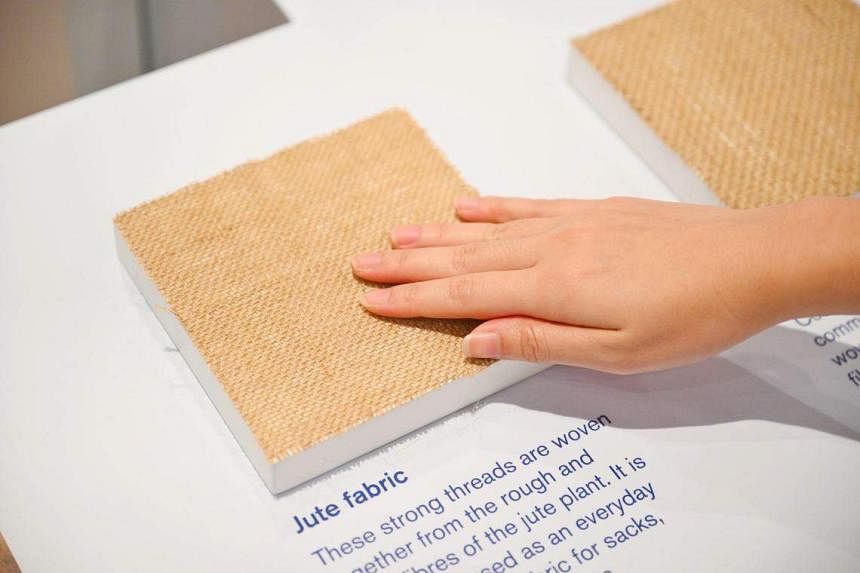
The artist’s large-scale In A Balinese Village takes pride of place on one wall, accompanied by images obtained by infrared imaging and X-rays. The latter proves that Cheong had revised and painted over the work, which was first exhibited in the landmark Pictures Of Bali exhibition in 1953.
Following the revision, the work was exhibited again at his 11th solo show in Kuala Lumpur in 1966, and redated to 1952 to 1964.
Ms Teo had seen images of the 1953 work in archival images and wondered what had happened to the painting. She suspected that the original work had been painted over. She says: “I had a hypothesis, based on the archival views, the size of the painting. And you can see he left a border where there are different colours beneath this current sepia tone.”
After she met Dr Tay and showed the latter the archival image, they put the painting through an X-ray, which proved that Ms Teo’s theory was correct.
The curators worked with Singapore General Hospital to X-ray various works, including Young Girl, which also produced an unexpected surprise.
This work contains a horizontal streak of paint which runs across the girl’s eyes. The resulting image was hard to decipher, but the eureka moment came as Ms Teo was peering at the image on the computer from an odd angle over Dr Tay’s shoulder.
“We realised that it was the same composition but painted in a vertical format, which Cheong then painted over to the current work,” Ms Teo says.
This revelation helps curators glean new insights into the artist’s thought processes. “Perhaps he was thinking about creating more compositional balance.”
Even well-known works can offer new information.
The curators examined Cheong’s Drying Salted Fish – arguably his best-known work as it appears on Singapore’s $50 note – and managed to identify the various inks he used. The meticulous artist used Chinese inks to draw outlines, liquid ink for his signature and watercolours for other sections.
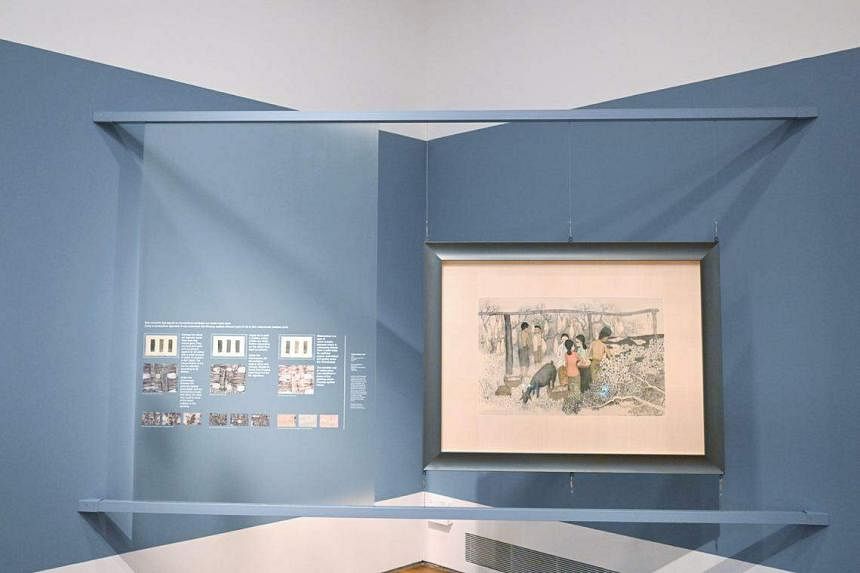
While such details may not seem important on first encounter, Dr Tay notes that identifying materials can also offer insights into the times and places the artist was working in.
In the post-war period of the 1950s, for example, Cheong and his fellow Singaporean painters used masonite boards as backing material for canvas and paper, as it was cheap and widely available.
Dr Tay says: “At the time, masonite boards were construction material as well. They were promoted as being very suitable for tropical climates and that started me thinking this might be one way masonite boards were promoted to the artists as well.”
Masonite boards, made from moulded wood fibre, are now much rarer. Ms Teo says with a laugh that they had a hard time sourcing them for the exhibition. “We went on eBay, Etsy and Amazon.”
This is the first time the gallery has presented a show focusing on what material analysis can reveal of a Singaporean artist’s practice. But Ms Teo says research on Singapore artists is ongoing at the museum and the Heritage Conservation Centre, where the National Collection is cared for and new discoveries are being made.
“This marks an exciting juncture where we’re presenting some of this information to a public audience. We’re interested in what the public thinks and how it responds to this.”
5 highlights from Cheong Soo Pieng: Layer By Layer
1. In A Balinese Village 1953, 1952-1964, oil on canvas, marouflaged on hardboard
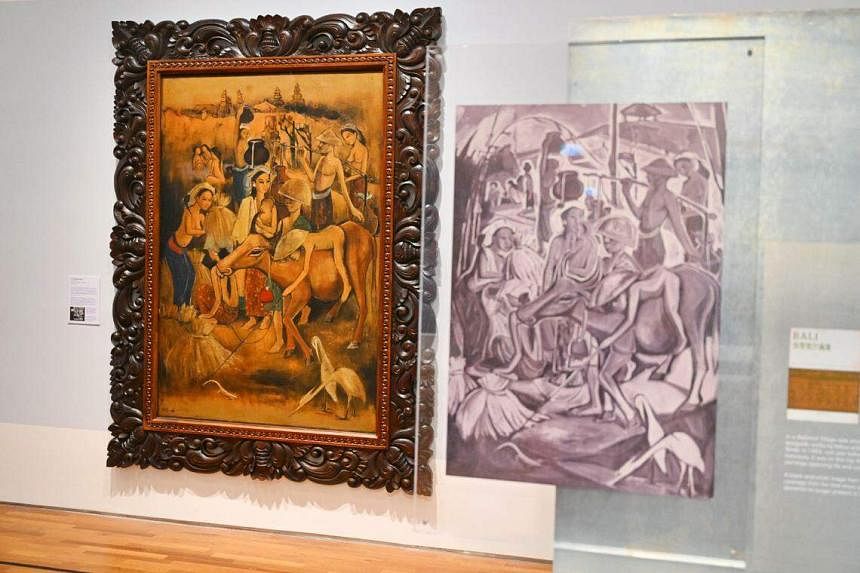
This large-scale painting, measuring 195cm by 131cm, is a demonstration of how technology can aid art history. The infrared and X-ray images reveal how much Cheong has changed the painting, and the redating of the piece from 1953 to 1952-1964 also reflects the artist’s fertile decade of artistic development and evolution since he first made the work.
2. Young Girl, 1948, oil on plywood
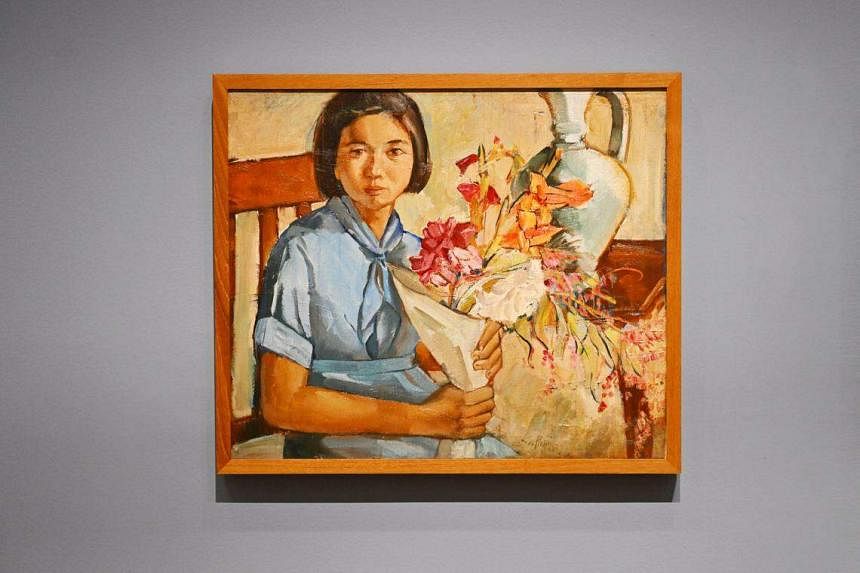
The change from a portrait to landscape orientation allowed Cheong to add more details, such as the chair and vase in the background, which helped balance the large bouquet of flowers. The X-ray image has been reproduced on a board, which visitors can swivel around to compare the two compositions.
3. Busy Planters, 1968, oil on canvas
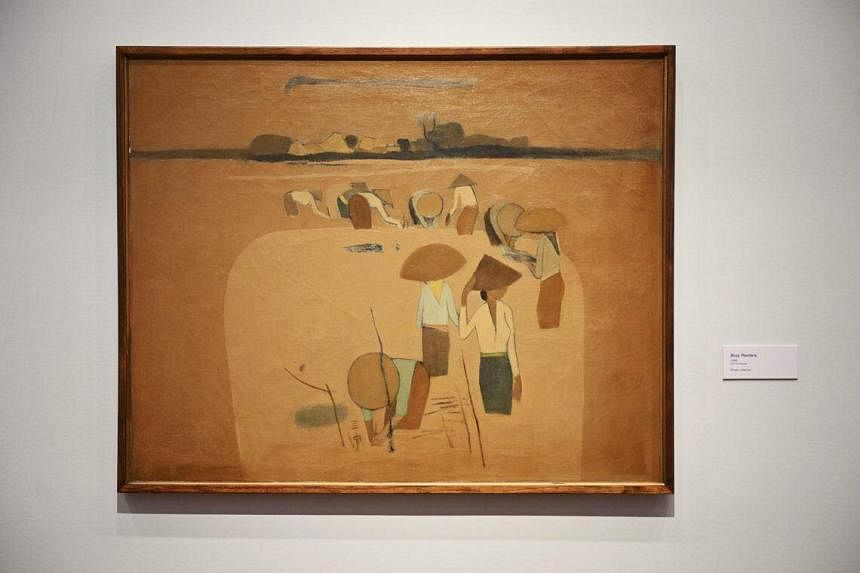
This painting produced a surprise for Dr Tay. Close examination showed that Cheong had moved his signature from a prominent position in the blank space in the lower left corner of the canvas to a more discreet location in the centre, amid the busier portion of the canvas. “That was shocking to me,” Dr Tay says. “Despite having worked with the National Collection throughout my career, using all these techniques, we find things that we never expect.”
4. Landscape, 1963, oil on canvas
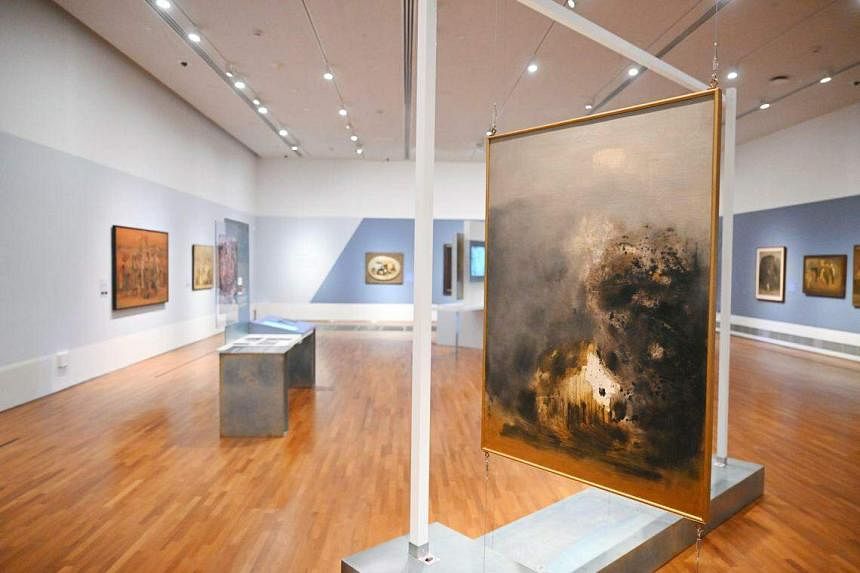
Sometimes, insights can be gained by looking at the back of paintings. This is one of four works displayed in the centre of the gallery, hung so that visitors can look at the front and the back of each painting.
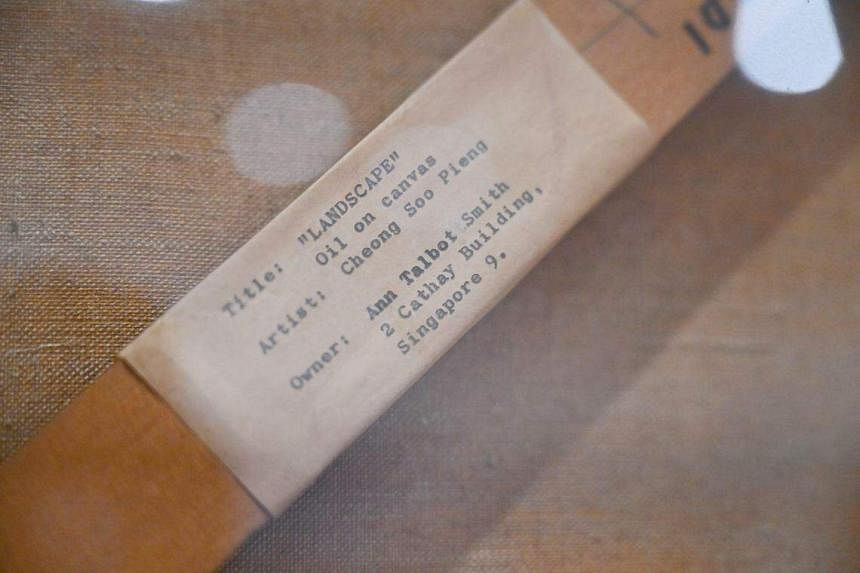
A label on this work states that it belongs to Ann Talbot Smith. Ms Smith was secretary to Datuk Loke Wan Tho, founder of film company Cathay Organisation and a philanthropist who also collected Cheong’s works. Another label reveals that the painting was a gift from the artist to Ms Smith. These labels suggest Ms Smith had an art collection.
5. Singapore Scenery, 1970, coloured epoxy and copper strips on wood panel
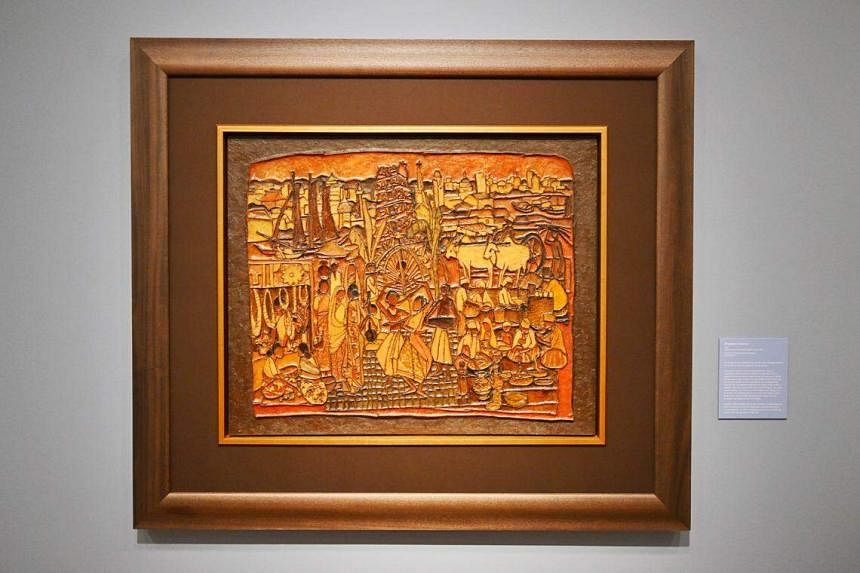
This densely populated work comes from the later period of Cheong’s practice and shows his penchant for making mixed-media assemblages.
While it is not a painting, Ms Teo points out that the process by which he put together this work is similar to how he would create a painting. He prepared the wood panel with clear resin, as he would prime a canvas, before fixing copper strips to outline figures, similar to how he would map out his underdrawings. He then poured in coloured epoxy to complete the work.
Other highlights
Art workshops
Schools can sign their students up for a hands-on workshop, where participants can paint on small canvases and see their works put through the infra-red imaging process.
Docent tours
Sign up for free docent tours of the exhibition from April 19. English-language tours will be conducted from Thursdays to Sundays at 11am, while Mandarin tours are available on Saturdays and Sundays at 2pm.
Cheong Soo Pieng: 1970s Mature Abstract Works

If the gallery’s show whets your appetite, artcommune gallery is also presenting a Cheong Soo Pieng show from April 5 to 21. This smaller show will focus on the artist’s later, more abstract works, from mixed-media metal relief works to abstract ink on paper. Admission is free. Go to artcommune.com.sg for more information.
Book It/Cheong Soo Pieng: Layer By Layer
Where: National Gallery Singapore, 1 St Andrew’s Road
When: April 5 to Sept 29, 10am to 7pm daily
Admission: Free
Info: str.sg/8toK
Correction note: In an earlier version of the story, we said that admission to the show is free for Singaporeans and permanent residents. The National Gallery Singapore has since clarified that admission to the show is free for all.
